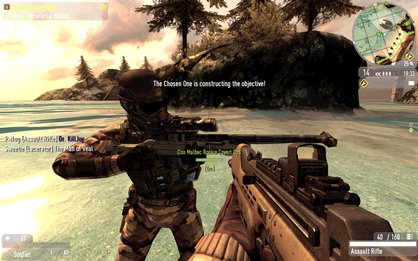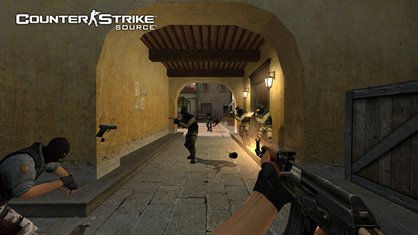Why Steam works
How Valve is revitalizing PC gaming
We’re talking about Valve becoming the platform holder and guardian of the PC as a gaming system over the next two years,” says Stephen Gaffney, Business Development Manager of Splash Damage. The Enemy Territory: Quake Wars developer is responding to Valve’s announcement of Steamworks, a suite of publishing apps that will enable developers and publishers to use Steam’s many tools for free.
Valve is giving away the tools that make up 80-90% of Steam. With 15 million customers, their digital delivery platform has already taken on a life of its own: through it you can buy all of Valve’s releases and over 250 third-party games, while it also takes care of multiplayer matchmaking, voice chat, stats collection, anti-piracy measures and sales tracking. Now they’re going to give everyone in the industry the opportunity to use that functionality, solving at a stroke many issues that burn up development time, incur costs and hit sales. Steamworks could place PC gaming back at the forefront of the videogame world and make it a more viable platform than ever for developers to focus on.

Above:Enemy Territory: Quake Wars
Valve announced Steam back in 2002, after a troubled beta process where it seemed to many users that Valve was anything but ready to ship a game through this software. The initial idea was to keep the Counter-Strike community rolling along and provide a timely way of releasing updates, and eventually games. Erik Johnson, Valve’s product manager, was there at the launch: “Counter-Strike went ballistic, and there was a pretty acute issue of getting patches to the customers. We had one of the big download sites at the time send me an email that said ‘Sorry, we can’t host your updates any more because it just cost us too much money.’ Well, shit!”
Valve’s numerous game updates presented a problem. They were releasing huge updates for Counter-Strike that were approaching full game development costs four times a year, and with those updates there were four or five days of confusion as the players attempted to find the patch and update. Their own popularity was the problem. The solution was to release incremental updates, more often – thus Steam was born. And when it finally launched, the size of the Counter-Strike community, coupled with those waiting for Half-Life 2, broke it.

Above: Counter-Strike
Erik explains: “It was gut-wrenching, because we had invested a ton of time into building this userbase and we were putting them into this situation where, internally, we saw the long term plan for Steam and they were happy there, but they were not happy the first time they showed up. We were terrified: we had a bunch of unhappy customers, and at that point Valve had never had unhappy customers. Truly, we were delivering a bad experience. And we had a lot of confidence we could fix that... but we’d better get there as fast as we can.”
Sign up to the GamesRadar+ Newsletter
Weekly digests, tales from the communities you love, and more


